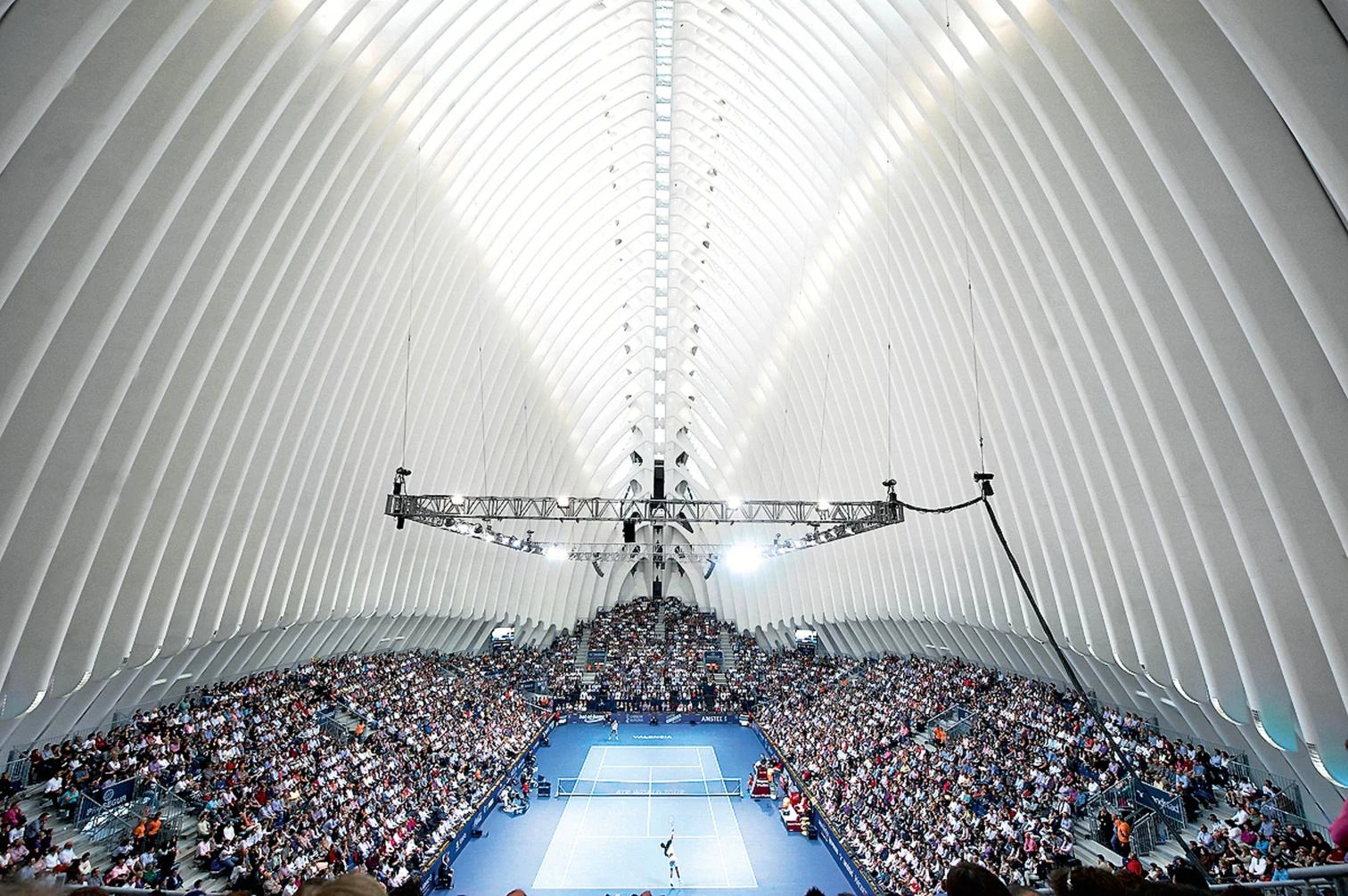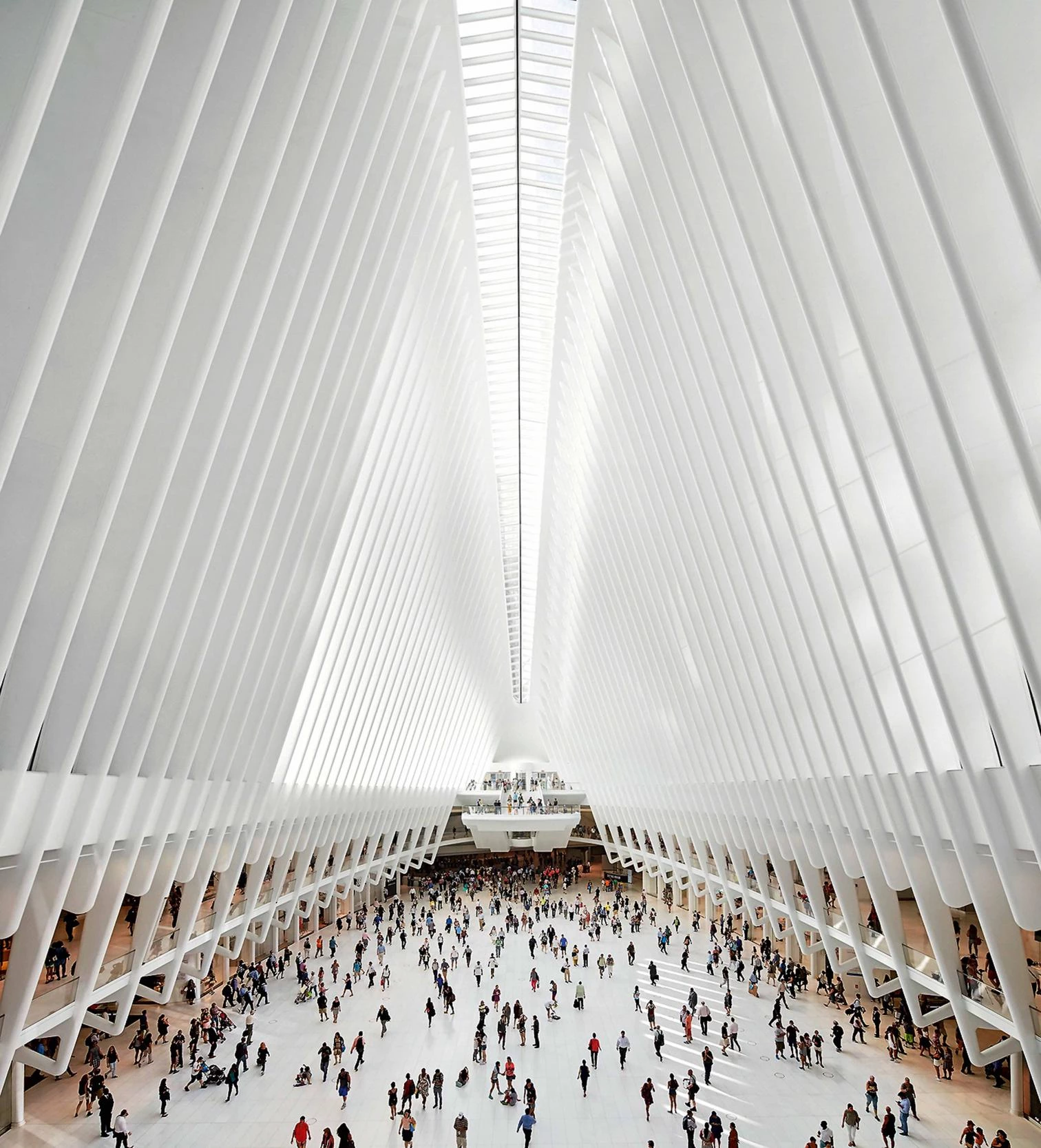We Wanted a Calatrava
Rise and Fall of a Starchitect

Agora, Valencia
At the dawn of the 21st century, Santiago Calatrava Valls was a global celebrity. His name appeared attached to phrases like “prestigious Spanish architect who has been triumphing in the world.” True, the only Spaniard on the list of Pritzker winners was – and still is – Rafael Moneo, who landed the prize in 1996. But at the turn of the millennium Calatrava had tens of projects in design stage or under construction, in cities as different and separated as Milwaukee and Athens, and he had already been the subject of numerous publications and exhibitions, not to mention a growing collection of honorary doctorates and a continuous stream of awards.
Calatrava’s problem then was to stretch time and multiply himself to be able to keep up with the commissions raining upon him, driven, as he perhaps was, more by ambition than by good sense – that which would have made him devote to each project all the reflection it required.
Nevertheless life continued to smile on Calatrava. Cities that still had no work of his began to feel incomplete, as if suddenly burdened with an unacceptable deficiency. In 2004, presenting a project drawn up by him for the Plaza de Castilla, Madrid’s then mayor Alberto Ruiz Gallardón stated that the absence of Calatravas in Spain’s capital “was a painful wound.”
A year later, in New York, Calatrava and his daughter dramatized the start of construction of the transportation hub at Ground Zero, releasing doves that were supposed to symbolize nothing less than the spirit of a city ready to take flight again, after being so atrociously hit by terrorism. That same year, the Metropolitan Museum’s facade was decked with banners announcing exhibitions on Fra Angelico, Van Gogh, and… Calatrava.
The world loved Calatrava. He was admired, acclaimed, solicited, even envied, his appearances in media applauded. It was like he was just a step away from being canonized in life.
It was at this point that things started going wrong, and in the last few years, positive saturation has given way to saturation in the opposite direction. Now, when he makes newspaper headlines, it is because his buildings have been accumulating major construction delays and incurring exorbitant costs. Or because they have failed to satisfy the expectations raised. Or because they have been quick to need repair and costly maintenance. Or because, after being conceived as emblems of the progress of a community, they have turned out to be banners of ruinous management…
What went wrong? What has Calatrava done to deserve so much praise, and then so much disgrace? How has the rare bird morphed into the raven of ill omen? Why does Calatrava’s Wikipedia entry now give more space to his problems than to his solutions? Why is it that not a few clients who adulated him now throw unpublishable epithets upon him, adding, to drown all doubt, that they will never hire him again?
It was to answer these questions that I have written Queríamos un Calatrava (We Wanted a Calatrava). And, in the process, to throw some light on the architect’s modus operandi. My work method was to make a limited but representative selection of works, visit them with notebook and pen in hand, and speak with some of the clients who commissioned them, with collaborators of Calatrava who participated in the projects, with developers and technicians involved in execution, with journalists who followed the works closely, with people in charge of their maintenance, and with users or residents, not to mention other architects, engineers, urban planners, and social activists directly or indirectly having to do with them.
Naturally I would have liked to consult Santiago Calatrava himself. But when I told him my intentions and requested a meeting, I got ‘no’ for an answer. Because it has had to do without the participation, without the blessing, of its subject, the book is ‘unauthorized.’ I mention this not as a merit or demerit, just as a fact.
Even without his collaboration, nevertheless, I believe that the book makes enough strokes to sketch a portrait of Calatrava that is more truthful, or at least more verifiable, than those we get from his hagiographers. From city to city, project to project, challenge to challenge, the features of his personality come to the fore. So it is that in the early work for the Stadelhofen station in Zurich we find a cultivated, impressive, very promising architect; in the Bac de Roda bridge in Barcelona, a smoothie given to entertaining who takes great pains to win allies and pave the way for himself in his native country; in the City of Arts and Sciences of Valencia, a wizard of seduction capable of annulling the desires of the client; in the Alamillo bridge of Seville, a professional waving the banner of audacity and innovation knowing that his work is materialized with construction methods unworthy of such insignias; in the Zubi Zuri bridge of Bilbao, in contrast, a pugnacious type more interested in the aesthetic and integrity of his work than in its functionality, who does not hesitate to sue a client for a minor disagreement; in the auditorium of Santa Cruz de Tenerife, a veteran provider of exuberant architectural forms who is indifferent to the overruns that exuberance requires; in the discarded project for the revamping of the Reichstag in Berlin, a bad loser who remembers affronts and holds grudges; in the Milwaukee Art Museum, the prophet – time and again denied, though not here – of buildings endowed with movement; in the Tuning Torso of Malmö, a sorcerer’s apprentice who thinks he can use the media for his purposes and ends up suffering from their revelations; in the unborn opera house of Palma de Mallorca, a Calatrava who has no qualms about snuggling up to politicians; in the Olympic facilities of subsequently impoverished Athens, a supplier of luxurious television studios; in the Madrid obelisk, the artist selected to design a bank’s gift to the city, which ends up with an onerous expense for life; in Venice’s Ponte della Costituzione, the star who is instrumental in making the privileged commission to build the fourth footbridge over the Grand Canal a scandal of international scope; in the Oviedo convention center, the architect of a fiasco that combined previous excesses with new ones, causing the partial collapse of the building during construction; and, in the New York hub, which wraps up the list of works visited, someone willing to swallow his ego to take on an air of humility, and accept spending cuts just to hang on to a commission of enormous world repercussion.
The intention of the book is not to bring Calatrava down from his high pedestal, but to answer the questions raised above, and present him as seen by those who have dealt with him in the last thirty years, without the retouchings or half-truths devised by PR officers, politicians, or Calatrava himself, a master of self-promotion.

Oculus Station, New York
This text is extracted from Queríamos un Calatrava, by Llàtzer Moix, recently published by Anagrama.





